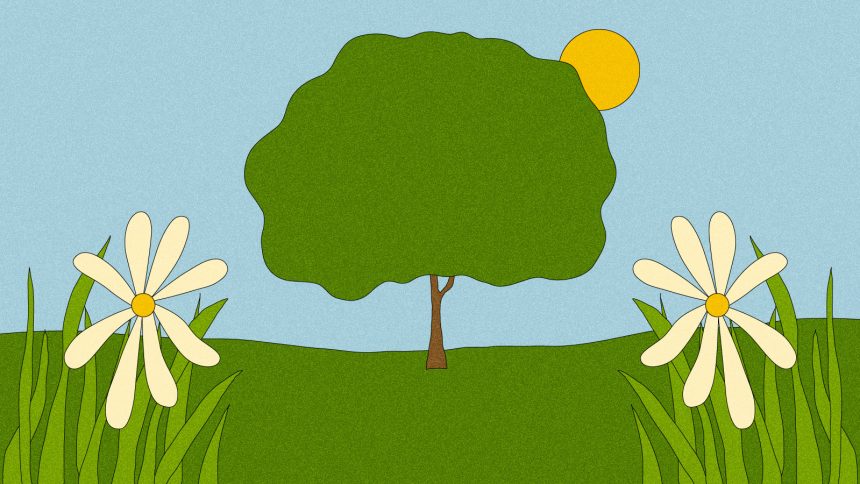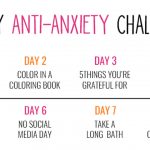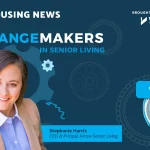The vision
“How can healing our relationship to the planet help us heal our relationships with ourselves?” — Ki’Amber Thompson
The spotlight
The outdoors can be a healing place. Spending time in nature can inspire wonder, confer physical and mental health benefits, and deepen our understanding of the land and ecosystems around us — and our role in caring for them. That’s part of the idea behind the Charles Roundtree Bloom Project, an outdoor program in San Antonio specifically for young people whose families have been impacted by incarceration. The organization offers activities like camping trips, surfing, and community gardening, also weaving in meditation, journaling, and other exercises intended to foster introspection and empowerment.
“We are not just an outdoor organization creating more access in the outdoors, or working on climate issues in a solely environmental way,” said Ki’Amber Thompson, the program’s founder. “We’re also doing deep healing work with the participants, and thinking about not only environmental but social sustainability, and how that connects.”
Creating safe and joyful experiences also means overcoming many barriers these kids face in enjoying the outdoors. Those include both historical exclusion from these spaces and a continued narrative that outdoor recreation is not for people of color. And, increasingly, these barriers are compounded by extreme weather that makes it ever-harder to ensure safety, let alone restoration, in the outdoors.
Thompson (who uses both they and she pronouns) started the Bloom Project to address a need they saw in their community. They had discovered a love for the outdoors while attending college in California, and wanted to make those same transformative experiences possible for young people in her hometown of San Antonio — specifically, those caught up in a system of over-policing, incarceration, and environmental injustice. This work is personal for both Thompson and Gabriela Lopez, the organization’s co-director. Lopez’s father has been in prison for most of her life, she said, and as a kid she saw nature as a form of therapy that helped her cope. She was excited to join the Bloom Project after spending many years as a teacher, and seeing how the school system was not well equipped to address some of the mental health issues and traumas that young people were experiencing.
“I feel like it’s promoting healing in a way that’s really accessible,” she said of the Bloom Project’s work, “but then also creating a generation of advocates, not only for their communities, but for nature and for the outdoors and for the land.”
In creating those experiences, the Bloom Project’s directors know they are up against prevailing narratives that outdoor recreation is not for everyone. In Texas, around 95 percent of land is privately owned, Thompson said, making access to outdoor spaces challenging — but, they added, that’s only the beginning of the issue. Despite their best efforts to make outdoor excursions feel safe and inclusive, they have still on occasion been made to feel unwelcome, a microcosm of the issues people of color face in outdoor access across the country.
“We’ve done camping trips in different state parks and at Big Bend National Park in Texas, and we’ve experienced policing on multiple occasions from white park users,” they said. Many affinity organizations have emerged to create more visibility and safety in outdoor spaces for people of color, people with disabilities, queer people, and others — including Black Outside, the Texas-based organization that has housed the Bloom Project for the past five years. (Later this year, the program will be spinning off into its own nonprofit.)
In some ways, she said, the Bloom Project is an experiment in preconfiguring a better, more just world. Sessions include healing or talking circles for sharing and processing, in an environment intentionally free from policing. And another core part of the programming is education that tackles head-on the realities of the challenges that are showing up in young people’s lives — always in an age-appropriate way, Lopez said. At a park day with a group of younger kids earlier this summer, she facilitated an experiment in which they tested how quickly ice cubes would melt on different surfaces — a fun way of learning about the urban heat island effect. But the heat melting those ice cubes also represents another, ever more pressing challenge to creating safe and enjoyable outdoor experiences.
More frequent and intense extreme weather events — like Hurricane Beryl, which narrowly missed San Antonio last month — and a new normal of hotter summers mean that the very tool the Bloom Project uses to facilitate healing and connection is getting harder to access. “It’s so, so hot in San Antonio these summers,” Thompson said. Last year, the city sweltered through more than 70 days of triple-digit temperatures. Because of heat, the organization does not run camping trips locally in Texas in the summer months. “It’s really hard because [summer] is a time where we could see our youth more, since they’re on a break from school,” Lopez said. But it isn’t always worth the risk, nor conducive to the overall mission. “We don’t want to bring people outside and have them feel miserable.”
Thompson said they’ve made adjustments like starting some activities earlier in the morning before it gets prohibitively hot outside and paying attention to basic protections like hats, sunscreen, and shade. The organization has also thought about emphasizing water-centric activities in the hot months, or even indoor sessions.
One new program the Bloom Project is piloting later this summer, in partnership with Latino Outdoors and the Casey Family Foundation, an organization aimed at improving the foster system, is a four-month special cohort dubbed the Wild Trail fellowship. That program will focus less on recreation and more on education and career pathways in different environmental and outdoor sectors. The first meeting will be in an REI store, Lopez said, where the high school-age participants will go on an indoor scavenger hunt, assemble first aid kits, and hopefully hear from a store manager. Across the country, organizations that work on outdoor access, education, and recreation are grappling with the same conundrum. José González, founder of Latino Outdoors, noted that for the first time this year, the nationwide Latino Conservation Week will be shifted from late July to late September, due to concerns about the heat. And even if an event is not cancelled or postponed, extreme weather has increasingly become a part of planning. “Many people do not know how heat can affect them — how to spot heat stroke, for example — so it’s important to note it as part of risk management and the education for participants,” he said.
In May, the outdoor education organization Outward Bound coordinated three events in Vancouver, Halifax, and Toronto, bringing together more than 60 groups from across Canada to discuss how the outdoor sector can adapt to climate impacts, and also be a part of mitigation. One wilderness program manager noted that “climate change has irrevocably shifted the landscape of outdoor education.”
Although the realities of climate change are compounding the challenges faced in creating restorative and joyful experiences in the outdoors, they also make that work all the more pressing. The ultimate goal for the Bloom Project, Thompson said, is to imbue these young people with a sense of agency and radical imagination that will help them usher in a healthier, more just world. “Sometimes with justice education, it’s really focused on all the problems,” Thompson said. “And that’s real, and it’s important to be educated on that.” But, they said, the key is striking the right balance, and creating the right container that can allow moments of heaviness alongside moments of reflection…






